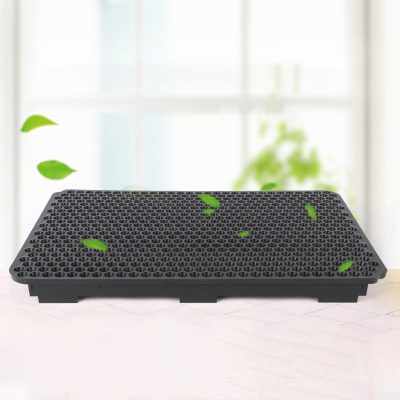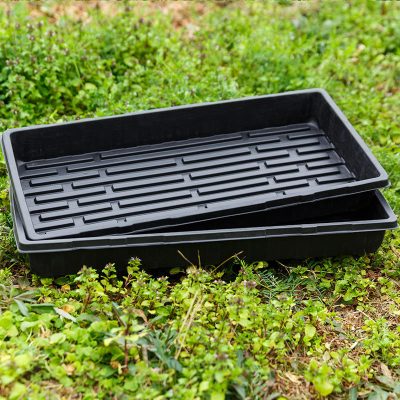Efficient watering and proper drainage are crucial for the health and success of plants in plant trays. Here are some tips to help you achieve efficient watering and drainage:
- Choose Plant Trays with Drainage Holes: Ensure that your plant trays have drainage holes at the bottom to allow excess water to escape. If your trays don’t have drainage holes, you can create them by using a drill or hot nail.
- Use a Well-Draining Potting Mix: Use a well-draining potting mix specifically designed for seed starting or container gardening. Avoid heavy garden soil that can retain excess moisture and hinder proper drainage. A good potting mix will allow water to flow through easily while retaining enough moisture for plant roots.
- Water Thoroughly: When watering your plant trays, water thoroughly until you see water draining out of the bottom. This ensures that the entire root zone is evenly moistened and allows any excess water to drain away, preventing waterlogged soil.
- Water from Below: Fill the bottom tray of the plant tray setup with water and allow the soil to soak up moisture from the bottom. This encourages plants to develop deep root systems as they seek out the water source. This method also helps prevent overwatering and reduces the risk of fungal diseases.
- Avoid Overwatering: Overwatering is one of the common mistakes in plant tray gardening. It can lead to root rot and other moisture-related issues. Allow the top layer of the soil to dry out slightly before watering again. Stick your finger into the soil to check the moisture level, and water only when it feels slightly dry.
- Monitor Moisture Levels: Regularly check the moisture level of the soil in your plant trays. Stick your finger or a moisture meter into the soil to determine if it’s time to water. Different plants have different water requirements, so it’s essential to understand the specific needs of the plants you are growing.
- Adjust Watering Frequency: The watering frequency may vary depending on factors such as plant size, environmental conditions, and the type of plants you are growing. During hot weather or in dry indoor environments, you may need to water more frequently. Conversely, reduce watering during cooler or more humid periods.
- Use a Watering Can or Spray Bottle: Use a watering can with a fine rose or a spray bottle to water your plant trays gently. This helps avoid disturbing the soil and damaging delicate seedlings. A gentle spray also prevents water from splashing onto leaves, reducing the risk of fungal diseases.
- Consider Self-Watering Systems: If you have many plant trays or if you’re frequently away from home, consider using self-watering systems. These systems have a reservoir that slowly releases water into the soil as the plants need it, maintaining consistent moisture levels and reducing the frequency of manual watering.
Remember, it’s essential to find the right balance with watering. Adjust your watering practices based on the specific needs of your plants, the environmental conditions, and the stage of growth. By providing proper watering and ensuring efficient drainage, you can promote healthy plant growth in your plant trays.








